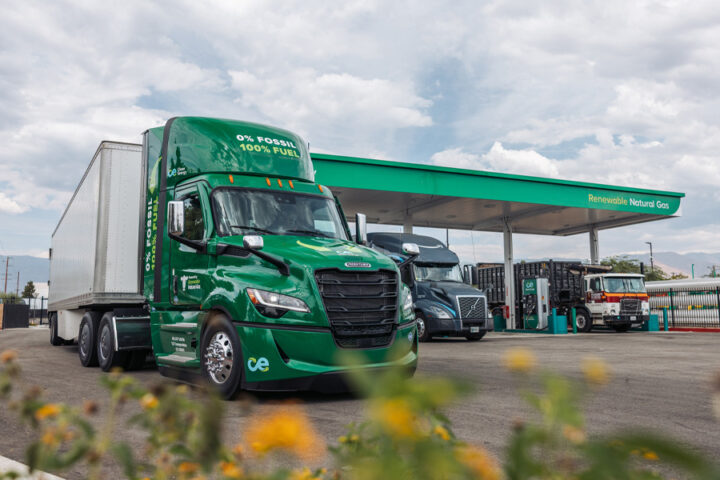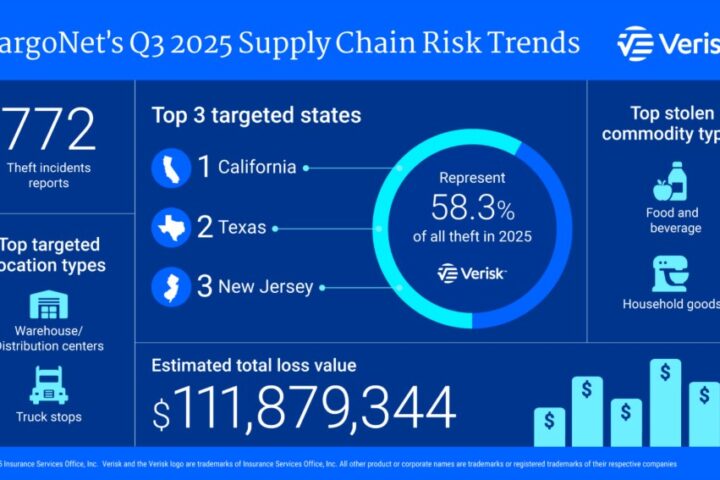Supporters of renewable natural gas (RNG) joined at the American Trucking Associations’ Management Conference & Exhibition to highlight what they consider the most sustainable alternative to diesel fuel.
The use of RNG is higher in California than in any other U.S. state because of stricter environmental regulations. With the conference taking place in San Diego, Daniel Gage, president of the Transport Project, moderated a panel discussion to address perceived limitations in range, fueling infrastructure, and performance.

They said these trucks are road-tested, and the fueling infrastructure of RNG, a purified biofuel derived from organic waste like landfills, wastewater, and animal manure, is rapidly growing. Eric Bippus, chief commercial officer of Hexagon Agility, made it clear that diesel would remain trucking’s predominant fuel. At the same time, there are more than 100,000 heavy-duty vehicles on the road using RNG, and he said it is a viable alternative.
Fueling with RNG can reduce emissions by 300%, achieving negative carbon-intensity results, while spending less per gallon of fuel, according to the Transport Project.
Natural gas is an important component of J.B. Hunt Transport Services’ goal to reduce carbon emission intensity 32% by 2034 from its 2019 level, said Jerrod Mounce, vice president of energy and sustainability. He spoke positively of the performance thus far of the Cummins X15N, the first 15-liter natural gas engine.
Mike Barr, director of on-highway sales in the western U.S. for Cummins, said the X15N offers power ratings up to 500 hp, torque up to 1850 lb.-ft., and a 750-mile (1,200 km) range. It also provides a 10% jump in efficiency over the Cummins ISX12N.
Mounce said J.B. Hunt’s experience with natural gas trucks has found that maintenance costs run “a couple cents a mile” higher than traditional diesel trucks. He added there was initially apprehension among some drivers regarding range and safety.
“This may be in part to the big gas tanks in the back, and a misconception it’s more dangerous,” Mounce said. Passage of federal legislation that would provide $1-a-gallon tax credit for RNG use would provide a big boost, he added.
Marc Rowe, director of sales with Love’s Alternative Energy, said there are more than 500 facilities making RNG, a figure that is expected to double before the end of the decade. There are about 1,500 natural gas fueling stations across the United States, with half of those designed to handle large, heavy-duty vehicles.

Barr said the Cummins 15-liter engine is an example of how partnerships yield results. Cummins learned from fleets’ real-world experiences with earlier generation natural gas engines, leading to changes such as using steel pistons instead of aluminum.
Clean Energy Fuels Corp. showcased a 2026 Freightliner Cascadia day cab with the Cummins X15N engine outside the San Diego Convention Center during the conference.
Shortly after the ATA conference event ended, Clean Energy announced a series of new RNG agreements. One was with Paper Transport, accounting for 250,000 gallons of RNG annually to fuel 12 new trucks. Clean Energy already provides fuel for nearly 50 Paper Transport trucks across nine states.
“These new agreements demonstrate the versatility of RNG across industries and the growing demand for a clean fuel alternative that delivers on sustainability without compromising performance at a significant discount to diesel,” said Chad Lindholm, senior vice president at Clean Energy.













